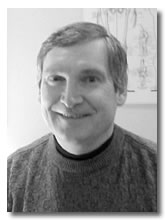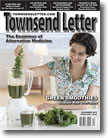Page 1, 2
Personal Use in Clinical Practice
I have been using RYR in my practice for about 15 years. I have used RYR alone or mixed with other natural supplements as policosanol, guggulipid, milk thistle (Silybum marianum), and coenzyme Q10. I currently have RYR manufactured in capsular form for my patients. Each capsule contains 500 milligrams of RYR standardized for 0.4% monacolin K levels and 100 milligrams of milk thistle seeds. I have seen RYR consistently lower elevated cholesterol and triglyceride levels in patients. I try to monitor lipid levels before and after treatment. I have observed that total cholesterol and LDL levels decrease about 20% to 30%, HDL increases 5% to 15%, and triglyceride decreases 10% to 30%. This is consistent with the reported data in the scientific literature. I have prescribed RYR to over 400 patients and have dispensed about 80,000 capsules. Patients are usually very happy with the results. They can go back to their doctors with a lab test that shows decreased lipid levels. I have noted that patients on RYR have less incidence of myocardial infarction when compared with patients who do not take it or other statin therapy. I usually prescribe 2 to 4 capsules of the RYR product per day with food or meals. I also like to give some nutritional advice about diet and lifestyle changes that are beneficial for controlling elevated lipid levels along with RYR supplementation. I have observed minimal adverse side effects. Most patients do not report any side effects at the recommended dosage. I usually tell the patients to supplement with coenzyme Q10. Occasional stomach upset occurs, and rarely muscle aches and myalgia occur. I observe that about 1% to 2% of my patients taking RYR report unusual muscle pains and myalgia. I try to monitor liver and kidney function tests and also test for CPK levels in patients complaining about muscle pains. I have been very satisfied with the clinical results of using RYR to help control hyperlipidemia.
Dosage and Recommendations
I recommend using 2 to 4 capsules per day of a product that contains 500 to 600 milligrams of RYR powder standardized to contain 0.4% monacolin K content. I advise patients to take the supplement with or just after meals or food for best absorption, and to concomitantly take coenzyme Q10. I monitor lipid levels, liver and kidney function, and muscle markers such as CPK, before and during RYR supplementation.

Notes
1. Erdogrull O, Aziak S. Review of the Studies on Red Yeast Rice (Monascus purpureus). Turkish E J Biotech. 2004;2:37–44.
2. Yang CW, Mousa SA. The effect of red yeast rice (Monascus purpureus) in dyslipidemia and other disorders. Complement Ther Med. 2012;20(6):466–474.
3. Ma J et al. Constituents of red yeast rice, a traditional Chinese food and medicine. J Agric Food Chem. 2000;48(11):5220–5225.
4. Ram GY et al. Marked variability of monacolin levels in commercial red yeast rice products. Arch Intern Med. 2010;170(19):1722–1727.
5. Monascus Purpureus [monograph]. Altern Med Rev. 2004;9(2):208–210. Available at www.altmedrev.com/publications/9/2/208.pdf.
6. Cheng MJ et al. Chemical constituents of red yeast rice fermented with the fungus Monascus pilosus. Chem Nat Compd. May 2013;49(2):249–250.
7. Neuvonen PJ et al. Pharmacokinetic comparison of the potential over-the-counter statins simvastatin, lovastatin, fluvastatin and pravastatin. Clin Pharmacokinet. 2008;47(7):463–474.
8. Chen CH et al. Improved dissolution rate and oral bioavailability of lovastatin in red yeast rice products. Int J Pharm. 2013;444(1–2):18–24.
9. Li Z et al. Plasma clearance of lovastatin versus Chinese red rice in healthy volunteers. J Altern Complement Med. 2005;11(6):1031–1038.
10. Seenivasan et al. Microbial production and biomedical applications of lovastatin. Ind J Pharm Sci. 2008:70(6):701–709.
11. Guardamagna O et al. The treatment of hypercholesterolemic children; efficacy and safety of a combination of red yeast rice and policosanols. Nutr Metab Cardiovasc Dis. 2011;21(6):424–429.
12. Verhoeven V et al. Red Yeast Rice lower cholesterol in physicians–a double blind, placebo controlled trial. BMC Complement Altern Med. 2013;13:178.
13. Satore G et al. Mediterranean diet and red yeast rice supplementation for the management of hyperlipidemia in statin-intolerant patients with or without type 2 diabetes. Evid Based Complement Altern Med. 2013;2013;743473.
14. Li JJ et al. Beneficial impact of Xuezhikang on cardiovascular events and mortality in elderly hypertensive patients with previous myocardial infarction from the China Coronary Secondary Prevention Study. J Clin Pharmacol. 2009;49(8) 947–956.
15. Liu J et AL. Chinese red yeast rice (Monascus purpureus) for primary hyperlipidemia: a meta-analysis of randomized controlled trials. Chin Med. 2006;1:4.
16. Lu Z et al. Effect of Xuezhikang, an extract of red yeast Chinese rice, on coronary events in a Chinese population with previous myocardial infarction. Am J Cardiol. 2008;101(12):1689–1693.
17. Xie X et al. Chinese red yeast rice attenuates the development of angiotensin II-induces abdominal aortic aneurysm and atherosclerosis. J Nutr Biochem. 2012;23(6);549–556.
18. Zhu XY et al. Xuezhikang, extract of red yeast rice, improved abnormal hemorheology, suppressed caveolin-1 and increased eNOS expression in atherosclerotic rats. PLoS One. 2013;8(5):e62731.
19. Ma KY et al. Red yeast rice increase excretion of bile acid in hamsters. Biomed Environ Sci. 2009;22(4):269–277.
20. Hong MY et al. Anticancer effects of Chinese red yeast rice versus monacolin K alone on colon cancer cells. J Nutr Biochem. 2008;19(7):448–458.
21. Hong MY et al. Chinese red yeast rice inhibition of prostate tumor growth in SCID mice. Cancer Prev Res. 2011;4(4):608–615.
22. Li JJ et al. New cytoroxic azaphilones from Monascus purpureus fermented rice (red yeast rice). Molecules. 2010;15(3):1958–1966.
23. Cho YE et al. Red yeast rice stimulates osteoblast proliferation and increase alkaline phosphatase activity in MC3T3 cells. Butr Res. 2010;30(7):501–510.
24. Wong RW, Robie B. Chinese red yeast rice (Monascus purpureus-fermented rice) promotes bone formation. Chin Med. 2008;3:4.
25. Lapi F et al. Myopathies associated with red yeast rice and Liquorice: spontaneous reports from the Italian Surveillance System of Natural Health Products. Br J Clin Pharmacol. 2008;66(4):572–574.
26. Smith DJ, Olive KE. Chinese red rice-induced myopathy. South Med J. 2003;96(12):1265–1267.
27. Prasad CV et al. Rhabdomyolysis due to red yeast rice (Monascus purpureus) in a renal transplant recipient. Transplantation. 2002;74(8) 1200–1201.
28. Grieco A et al. Acute hepatitis caused by a natural lipid-lowering product: When "alternative" medicine is no "alternative" at all. J Hepatol. 2009;50(60:1773–1777.
29. Red yeast [Web page]. Medline Plus. www.nlm.nih.gov/medlineplus/druginfo/natural/925.html.
30. European Food and Safety Authority. Scientific opinion on the risk for public and animal health related to the presence of citrinin in food and feed. EFSA J. 2012;10(3):2605–2687.
Douglas Lobay, BSc, ND
103B-1980 Cooper Road
Kelowna, BC V1Y 8K5
dglslby@shaw.ca
 Douglas G. Lobay is a practicing naturopathic physician in Kelowna, British Columbia. Dr. Lobay graduated with a bachelor of science degree from the University of British Columbia in 1987. He then attended Bastyr College of Health Sciences in Seattle, Washington, and graduated with a doctorate of naturopathic medicine in 1991. While attending Bastyr College, he began researching the scientific information on the use of food, nutrition, and natural healing. Dr. Lobay enjoys research, writing, and teaching others about good health and good nutrition. He is the author of four books and numerous articles in magazines. He also enjoys hockey, skiing, hiking, tennis, and playing guitar. Douglas G. Lobay is a practicing naturopathic physician in Kelowna, British Columbia. Dr. Lobay graduated with a bachelor of science degree from the University of British Columbia in 1987. He then attended Bastyr College of Health Sciences in Seattle, Washington, and graduated with a doctorate of naturopathic medicine in 1991. While attending Bastyr College, he began researching the scientific information on the use of food, nutrition, and natural healing. Dr. Lobay enjoys research, writing, and teaching others about good health and good nutrition. He is the author of four books and numerous articles in magazines. He also enjoys hockey, skiing, hiking, tennis, and playing guitar.
Page 1, 2
|
![]()
![]()
![]()





 Douglas G. Lobay is a practicing naturopathic physician in Kelowna, British Columbia. Dr. Lobay graduated with a bachelor of science degree from the University of British Columbia in 1987. He then attended Bastyr College of Health Sciences in Seattle, Washington, and graduated with a doctorate of naturopathic medicine in 1991. While attending Bastyr College, he began researching the scientific information on the use of food, nutrition, and natural healing. Dr. Lobay enjoys research, writing, and teaching others about good health and good nutrition. He is the author of four books and numerous articles in magazines. He also enjoys hockey, skiing, hiking, tennis, and playing guitar.
Douglas G. Lobay is a practicing naturopathic physician in Kelowna, British Columbia. Dr. Lobay graduated with a bachelor of science degree from the University of British Columbia in 1987. He then attended Bastyr College of Health Sciences in Seattle, Washington, and graduated with a doctorate of naturopathic medicine in 1991. While attending Bastyr College, he began researching the scientific information on the use of food, nutrition, and natural healing. Dr. Lobay enjoys research, writing, and teaching others about good health and good nutrition. He is the author of four books and numerous articles in magazines. He also enjoys hockey, skiing, hiking, tennis, and playing guitar.